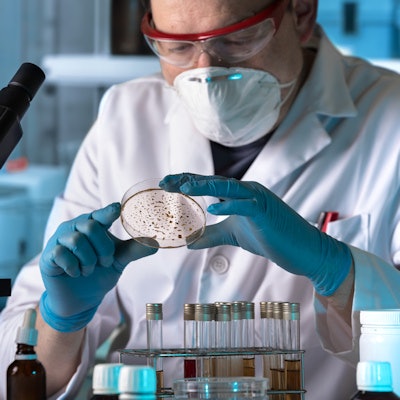
Implementing a two-step ordering process for urine cultures helped dramatically reduce the number of unnecessary tests performed at an urban community hospital, researchers concluded in a study published online February 21 in JAMA Network Open.
The quality improvement process was developed at the Michael Garron Hospital in Toronto as a means of reining in the number of urine cultures ordered for patients with nonspecific symptoms who were likely to get a diagnosis of asymptomatic bacteriuria and candiduria (ASB/C). Such testing is prone to overutilization, resulting in ASB/C diagnoses and unnecessary treatment with antibiotics.
Ordinarily, in cases of suspected urinary tract infection, nurses or physicians could order urine cultures, which were then processed by the hospital's microbiology laboratory. With the new ordering process, however, urine specimens could be collected, but they were stored in the lab; urine cultures were not processed unless a separate physician gave the go-ahead through a computer entry system for processing.
The primary end point of the study was the number of tests conducted per month per 100 patient days, and secondary end points included antimicrobial use, seven-day readmission rates, and intensive care unit transfers at the 515-bed hospital.
The patient populations were similar before and after the ordering process was changed. The researchers reported a 50% reduction for the primary end point, with the number of monthly urine cultures processed per 100 patient days reduced from 2.3 prior to the intervention to 1.2 after it, a statistically significant result.
| 2-step ordering for urine cultures: Before and after intervention | ||
| Preintervention (May 2015 to April 2016) | Postintervention (May 2016 to April 2017) | |
| Urine cultures ordered | 1,344 | 866 |
| No. of unique patients | 1,020 | 728 |
| Monthly urine cultures processed per 100 patient days | 2.29 | 1.17, p < 0.001 |
| Antimicrobial days of therapy per 100 patient days | 20.8 | 21.7 |
| 7-day readmission rate per 100 patient days | 2.6% | 3% |
| In-hospital mortality rate | 3.7% | 3.8% |
"Our intervention avoided unnecessary [urine cultures] while maintaining nurses' autonomy to collect them," Dr. Jeff Powis, medical director of infection prevention and control at Michael Garron Hospital, and colleagues wrote. "Not culturing urine maximizes cost avoidance compared with analytical or postanalytical interventions."
The reduction in the number of urine cultures ordered was not associated with a decline in the detection rate for ASB/C at the hospital, nor was it associated with antibiotic treatment or other secondary end points. Treatment for ASB/C was infrequent, and rates were similar in the pre- and postintervention periods, the researchers noted.
"There was no significant change in overall antimicrobial use or treatment of ASB/C," the authors wrote. "We attribute this to the fact that most empirical antimicrobials were provided for nonurinary indications and that the treatment of ASB/C was far lower than expected from the literature because of our antimicrobial stewardship program."



















